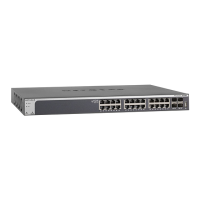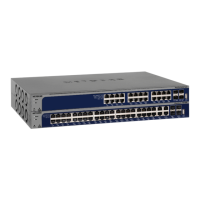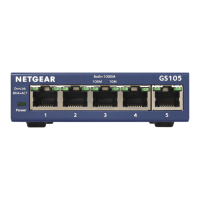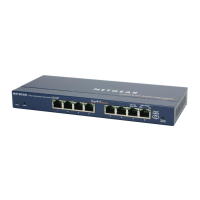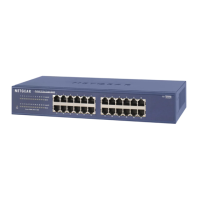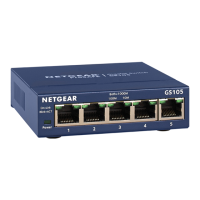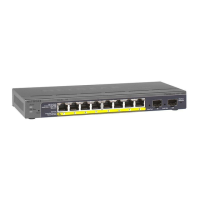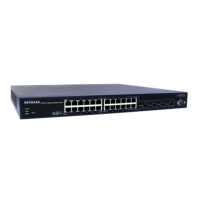Configuration Examples
195
XS728T ProSAFE 28-Port 10-Gigabit L2+ Smart Switch
Note: You can use QoS features to provide rate limiting on the guest VLAN
to limit the network resources the guest VLAN provides.
Another 802.1x feature is the ability to configure a port to enable or disable EAPoL packet
forwarding support. You can disable or enable the forwarding of EAPoL when 802.1x is
disabled on the device.
The ports of an 802.1x authenticator switch provide the means to offer services to other
systems reachable through the LAN. Port-based network access control allows the operation
of a switch’s ports to be controlled in order to ensure that access to its services is permitted
only by systems that are authorized to do so.
Port access control provides a means of preventing unauthorized access by supplicants to
the services offered by a system. Control over the access to a switch and the LAN to which it
is connected can be desirable in order to restrict access to publicly accessible bridge ports or
to restrict access to departmental LANs.
Access control is achieved by enforcing authentication of supplicants that are attached to a
controlled ports of the authenticator. The result of the authentication process determines
whether the supplicant is authorized to access services on that controlled port.
A port access entity (PAE) is able to adopt one of the following roles within an access control
interaction:
• Authenticator. A port that enforces authentication before allowing access to services
available through that port.
• Supplicant. A port that attempts to access services offered by the authenticator.
• Authentication server. Performs the authentication function necessary to check the
credentials of the supplicant on behalf of the authenticator.
All three roles are required in order to complete an authentication exchange.
The switch supports the authenticator role only, in which the PAE is responsible for
communicating with the supplicant. The authenticator PAE is also responsible for submitting
the information received from the supplicant to the authentication server so that the
credentials can be checked, which determines the authorization state of the port. The
authenticator PAE controls the authorized or unauthorized state of the controlled port
depending on the outcome of the RADIUS-based authentication process.
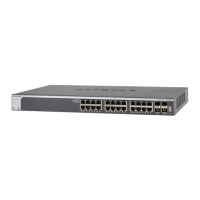
